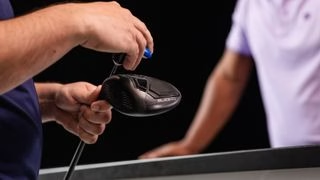Approximately 20 years ago, the ‘A-word’ (adjustability) was not a thing in golf. Equipment technology has advanced a great deal, however, and adjustability was permitted by the governing bodies in 2005 following restrictions that were introduced on the speed the ball could leave the club face with.
Today, it’s pretty much the norm for the best drivers and fairway woods to feature some kind of adjustability, and even some hybrids can be tweaked. Depending on the model you buy, you’ll most likely receive a T-shape wrench with your purchase. This crucial tool allows golfers to loosen the screw in the hosel and change the loft and lie angle settings.
A lot of golfers will rightly put that wrench away somewhere and it will never see the light of day again. That’s not necessarily going to be a problem if your driver was custom fitted, your swing remains consistent and your golf ball behaves itself.
(Image credit: PGA Tour Superstore)
However, there might come a time when you’re struggling with a consistent miss, such as a slice. With a simple adjustment to the loft and/or lie angle, and with the power to move weight in the head, the world is your oyster.
Before you start to play with the settings, however, it’s important that you know how and why to adjust your driver. If you’re not sure what you’re doing, you could end up in a setting that exacerbates your problem ball flight – so here’s a brief guide.
Do I Need To Adjust My Driver?
Often, it won’t be a lesson with a PGA professional that’s required, so much as a tweak to your set-up (we’re not talking about the way you actually set up to the driver here, although you might want to work on this too). If you’ve developed a consistent miss – maybe a high slice or low hook – you might benefit from adjusting your loft and lie once you know what loft your driver should be.

Some drivers like the Callaway Paradym Ai Smoke Max feature moveable weight that will alter shot shape
(Image credit: Future)
One of the most common faults amongst average club golfers is a slice, which you’ll get when the clubface is open to the path of the swing. Shots can start straight or to the right and finish even further in that direction.
With an adjustable driver, you can fix this by closing the clubface or by altering…
..
Click Here to Read the Full Original Article at Golf Monthly…
